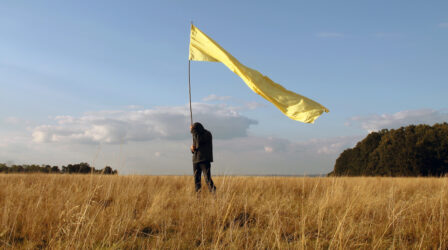Ciprian Homorodean
Ciprian Homorodean, Timisoara (Romania) 1982
Period of residency: April 2015 – 2017
Ciprian Homorodean received traditional training as a sculptor in his hometown, Timisoara, which he left in 2006 to move to Brussels and then Barcelona, where he lives since 2012. Growing up, he spent most summers in his grandparent’s village, where he was a shepherd and tended to the life of the farm. His first sculptures were gravestones he made for the local cemetery, including one for his grandfather’s tomb.
Considering art as just another language, he uses whatever media he finds appropriate to give his discourse a form, although a sculptural approach is often present in the conception of his projects. His vocabulary draws on personal history and observations of the world, viewed through a glass of humour and irony that is tinted nonetheless with a bit of quiet rage. The subjects he contemplates in his works are informed by controversial social, economic and political context, but the bottom line is human experience at its worst and its best. Central to his reflection are the mechanisms of stereotype, which sometimes influence our perceptions and define how we are perceived, as well as the individual’s quest for identity and the roles we voluntarily or unwillingly incarnate. In his art he develops a constellation where model and anti-model coincide: hero and villain, failure and success, wealth and poverty, life and death, and ultimately, art and life. Both sides of the story should be told.
His commentary, staged sometimes as self-critique, points at the attitudes of resignation and acceptance that appear to have become ingrained in society, reflecting a willingness to accept all kinds of restrictions and drawbacks that can in no way be justified. The indifference of the majority and its apathetic compliance with the degradation of social experience are instigators to his work as an artist, a mobile to invent quality life conditions and styles. “Nothing is impossible” in Homorodean’s world, an ideal that drives him and that he puts to practice in his art.
While in Belgium, he was recipient of the Prix du Hainaut (2007). He has exhibited internationally and has been invited to major exhibitions, such as the Bucharest Biennale (2006 and 2012), Survival Kit II at Contemporary Art Center, Riga (2010), Dublin Contemporary (2011), and The Jerusalem Show 7 (2014). He has presented his work in Barcelona on several occasions.
http://www.ciprianhomorodean.eu/

